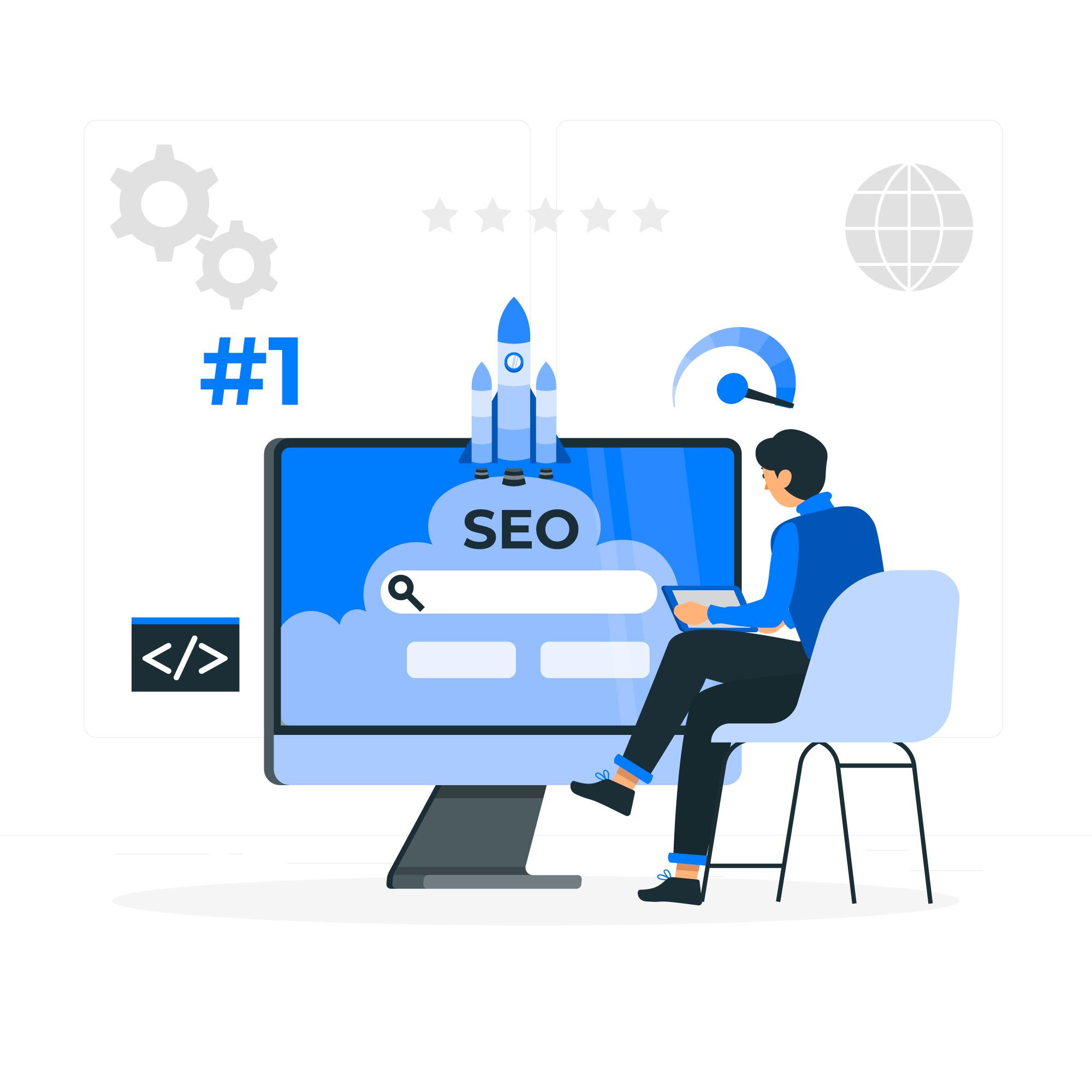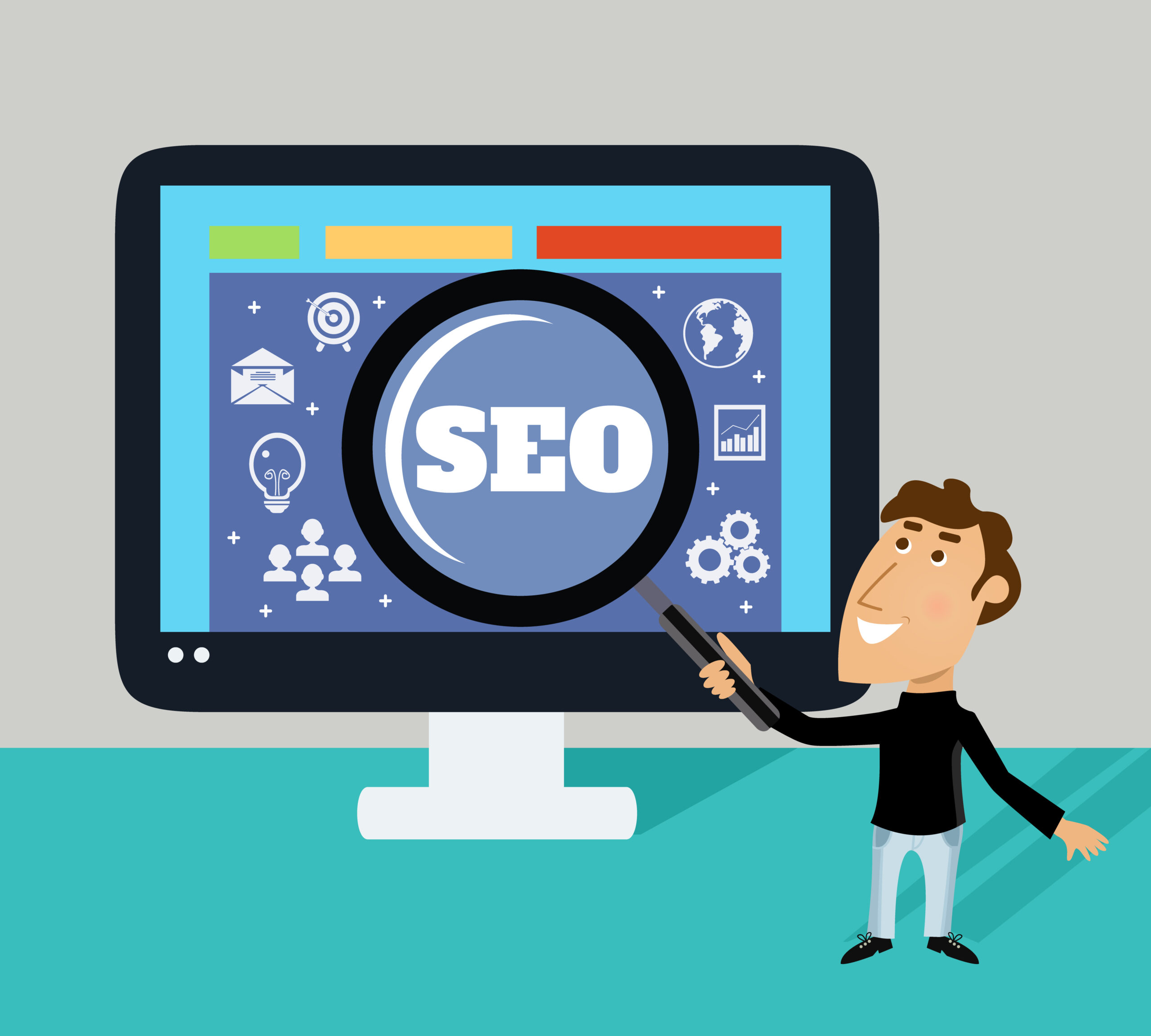
In today’s digital age, where the internet is an integral part of our daily lives, Search Engine Marketing (SEM) has become a critical tool for businesses looking to enhance their online visibility and reach a wider audience. SEM is a dynamic and evolving field that encompasses a range of strategies and tactics aimed at improving a website’s visibility on search engine results pages (SERPs). This comprehensive guide explores the world of SEM, its key components, best practices, and its role in modern marketing strategies.
The Essence of Search Engine Marketing
Search Engine Marketing Defined
Search Engine Marketing (SEM) is a digital marketing strategy that involves promoting a website by increasing its visibility in search engine results through paid advertising (PPC – Pay-Per-Click) and organic optimization (SEO – Search Engine Optimization). SEM aims to connect potential customers with a business’s online presence, making it easier for users to find the products or services they seek.

Key Components of SEM
SEM comprises two main components: Paid Search Advertising and Organic Search Engine Optimization.
- Paid Search Advertising (PPC): This component involves bidding on specific keywords in a real-time auction to display your advertisements prominently in search engine results. Advertisers pay a fee each time a user clicks on their ad, hence the term “Pay-Per-Click.” Google Ads (formerly AdWords) is the most popular platform for PPC advertising.
- Organic Search Engine Optimization (SEO): SEO is the process of optimizing a website’s content, structure, and back-end elements to improve its ranking on search engine results pages naturally. Organic results are not paid for directly; instead, they are earned through a combination of keyword optimization, high-quality content, and various technical factors.
The Search Engine Landscape
While SEM is applicable to various search engines, Google is the dominant player, holding the lion’s share of search engine traffic globally. Other notable search engines include Bing, Yahoo, and DuckDuckGo. Google’s algorithm updates and advertising platforms are key factors in the SEM landscape, making it essential for businesses to understand and adapt to Google’s ever-evolving algorithms.
The SEM Toolkit: Strategies and Techniques
Successful SEM strategies require a diverse set of tools, techniques, and tactics. Here are some key elements that make up the SEM toolkit:
1. Keyword Research
Keyword research is the foundation of SEM. The process entails pinpointing the precise language and expressions that prospective clients are apt to employ while seeking products or services. Tools like Google Keyword Planner, SEMrush, and Ahrefs help in finding the right keywords for your campaign.
2. Ad Campaign Creation
For PPC advertising, creating well-crafted ad campaigns is crucial. This involves writing compelling ad copy, selecting appropriate keywords, and setting bid amounts. The success of an ad campaign relies on its relevance, ad quality score, and user engagement.
3. Landing Page Optimization
When users click on your ad, they should be directed to a landing page that aligns with their search intent and the ad’s message. Landing page optimization is the process of ensuring that your web page is designed to convert visitors into customers.
4. Ad Extensions
Ad extensions provide additional information in your ads, enhancing their visibility and usefulness. Typical advertising enhancements encompass site links, callout additions, and organized highlights.
5. Bid Management
Managing your bids effectively is essential to control costs and achieve the desired ad position. Automated bid strategies and manual bid adjustments can be employed to optimize your campaign.
6. Quality Score
Google assigns a Quality Score to your ads, which influences their ad rank and costs. This score is determined by the ad’s relevance, click-through rate (CTR), and landing page quality.
7. Ad Scheduling
You can schedule your ads to appear at specific times of the day or days of the week to maximize their effectiveness. This is particularly valuable if your target audience has specific online behavior patterns.
8. Ad Tracking and Analytics
Comprehensive tracking and analytics tools, like Google Analytics and Google Ads conversion tracking, allow you to measure the effectiveness of your SEM efforts. These insights help refine your strategies for better performance.
9. Mobile Optimization
Given the increasing use of mobile devices for search, ensuring your website and ads are mobile-friendly is essential. Google also considers mobile-friendliness when determining ad ranks.
10. Negative Keywords
Excluding irrelevant keywords from your campaign is vital to prevent wasted ad spend. Utilizing exclusionary keywords assists in fine-tuning your targeting to guarantee that your advertisements reach the most pertinent audience.
11. A/B Testing
Testing different ad variations, landing pages, and strategies is an ongoing process in SEM. A/B testing helps determine which elements work best for your audience and continuously improve your campaign’s performance.

The Role of Content in SEM
Content plays a significant role in both the paid and organic aspects of SEM. High-quality content is essential for a successful organic SEO strategy. Here’s how content ties into SEM:
1. Content for SEO
SEO relies on creating content that is not only relevant to your target audience but also optimized for search engines. Content optimization includes keyword integration, meta tags, headers, and high-quality, informative, and engaging articles, blog posts, videos, and more.
2. Content for PPC
In paid search advertising, ad copy is crucial. Crafting compelling ad copy that aligns with the keywords and search intent is essential. Landing pages must also contain relevant and persuasive content to convert visitors into customers.
3. Content Marketing
Content marketing complements SEM by creating valuable, shareable content that can attract organic traffic and enhance a brand’s online presence. Successful content marketing includes blog posts, infographics, videos, and social media content that engage and educate your audience.
4. Social Media Advertising
Social media platforms play a significant role in SEM, with advertising options on platforms like Facebook, Instagram, Twitter, and LinkedIn. Engaging content can boost your social media advertising campaigns, driving traffic and conversions.
The SEM Ecosystem
SEM operates within a dynamic digital marketing ecosystem. Understanding how it fits into the broader digital marketing landscape is essential for leveraging its full potential:
1. Search Engine Optimization (SEO)
While SEM primarily focuses on paid advertising, SEO is all about improving organic visibility. These two strategies often complement each other in a comprehensive digital marketing plan.
2. Content Marketing
As mentioned earlier, content marketing and SEM go hand in hand. Valuable content not only attracts organic traffic but also enhances the effectiveness of PPC campaigns.
3. Social Media Marketing
Social media platforms offer advertising opportunities that work synergistically with SEM. Integrating your SEM efforts with social media advertising can boost your online presence.
4. Email Marketing
Email marketing is another facet of digital marketing. SEM can help drive traffic to email signup pages, and email marketing can, in turn, help nurture leads acquired through SEM.
5. Web Analytics
Web analytics tools provide insights into the performance of your SEM campaigns. Google Analytics is a valuable tool for tracking website traffic and user behavior, helping refine SEM strategies.

The Benefits of SEM
Businesses of all sizes can reap numerous benefits from implementing a well-planned SEM strategy:
1. Immediate Results
One of the primary advantages of SEM is the speed at which you can achieve results. As soon as your ad campaign is set up, your ads can start appearing on search engine results pages, potentially driving traffic and conversions right away.
2. Targeted Advertising
SEM allows you to precisely target your audience based on demographics, location, interests, and behavior. This accuracy enables you to connect with the appropriate individuals when the timing is optimal.
3. Measurable ROI
Search engine marketing (SEM) offers comprehensive metrics and analytical tools for monitoring the effectiveness of your advertising campaigns. You can measure your return on investment (ROI) and make data-driven decisions to optimize your strategies.
4. Control Over Budget
Through SEM, you retain complete authority over your advertising expenditure. You can set daily or monthly limits to manage your spending and adjust your bids as needed.
5. Brand Visibility
SEM enhances your brand’s online visibility. Even if users don’t click on your ads, they may still become aware of your brand, which can lead to future conversions or brand loyalty.
6. Competitive Advantage
Competing in the organic search results can be challenging, especially for new businesses. SEM offers a level playing field, allowing smaller businesses to compete with larger corporations in paid search results.
SEM Challenges and Pitfalls
While SEM offers many benefits, it also comes with its share of challenges and potential pitfalls:
1. Cost
Competing for the top spots in PPC advertising can be expensive, particularly for highly competitive keywords. Careful budget management is essential.
2. Ongoing Maintenance
SEM requires continuous monitoring and optimization to remain effective. Ignoring campaigns for extended periods can lead to wasted budget and decreased performance.
3. Click Fraud
Click fraud is a concern in PPC advertising. This occurs when fraudulent clicks on ads are generated to deplete an advertiser’s budget without genuine user interest. Vigilance and the use of click fraud prevention tools are necessary.
4. Complexity
SEM involves a steep learning curve. To maximize ROI, you must stay informed about search engine algorithms, industry trends, and the latest tools and techniques.
5. Competition
In highly competitive industries, achieving and maintaining top positions in paid search results can be a relentless battle.

Best Practices in SEM
To succeed in SEM, consider these best practices:
1. Thorough Keyword Research
Invest time in comprehensive keyword research to identify the most relevant and high-converting keywords for your industry. Leverage resources such as Google’s Keyword Planner and competitor assessments to enhance and narrow down your list.
2. Targeted Landing Pages
Direct users to landing pages that are specifically designed for your ad campaigns. Ensure that these pages are optimized for conversions and that they align with the user’s search intent.
3. Quality Score Optimization
Improve your Quality Score by ensuring ad relevance, high CTR, and a positive user experience on your landing pages.
4. Monitor and Optimize
Regularly monitor the performance of your SEM campaigns. Adjust your bidding strategies, ad copy, and keywords to achieve the best results. A/B testing can help fine-tune your efforts.
5. Local SEO for Brick-and-Mortar Businesses
If you have a physical location, make use of local SEO and SEM strategies to attract local customers. This includes optimizing your Google My Business listing and running location-based ads.
6. Mobile Optimization
Given the increasing use of mobile devices for search, ensure that your website and ads are mobile-friendly. Google also considers mobile-friendliness when determining ad ranks.
7. Regular Reporting and Analysis
Regularly generate reports to assess the performance of your SEM campaigns. Use these insights to make data-driven decisions and refine your strategies.
Future Trends in SEM
The world of digital marketing is ever-evolving, and SEM is no exception. Maintaining a competitive edge is imperative for thriving in this ever-evolving industry. Here are some emerging trends to watch for in SEM:
1. Voice Search
The rise of voice-activated devices like smart speakers and voice search on mobile devices is changing how users interact with search engines. Optimizing for voice search will be increasingly important.
2. AI and Machine Learning
AI and machine learning technologies are becoming more integral to SEM. They can be used for automated bidding, ad targeting, and personalized ad content.
3. Video Advertising
Video advertising, particularly on platforms like YouTube, is growing in popularity. Video ads are engaging and can reach a wide audience.
4. Ephemeral Content
Ephemeral content, which disappears after a short period, is gaining traction on platforms like Instagram and Snapchat. Integrating this type of content into your SEM strategy can enhance brand visibility.
5. Privacy Concerns
With increasing awareness of data privacy, advertisers will face challenges in targeting users with personalized ads. Advertisers will need to adapt to new regulations and find innovative ways to reach their target audience.
6. Sustainability and Corporate Responsibility
There is a growing focus among consumers on sustainability and the ethical practices of corporations. Businesses that align their SEM strategies with ethical and environmentally conscious values can attract a more conscientious audience.
You can also read: How to Choose the Right Budget Tracker
Search Engine Marketing (SEM) is an indispensable tool for businesses striving to enhance their online visibility and connect with potential customers. Whether through paid search advertising (PPC) or organic search engine optimization (SEO), SEM offers a range of strategies and techniques to improve a website’s ranking on search engine results pages.
SEM is a dynamic field that requires continuous monitoring, optimization, and adaptation to remain effective in an ever-changing digital landscape. By following best practices, keeping an eye on emerging trends, and understanding the evolving digital marketing ecosystem, businesses can harness the power of SEM to achieve their online marketing goals. With the potential for immediate results, precise targeting, and measurable ROI, SEM remains a cornerstone of successful digital marketing strategies in the digital age.